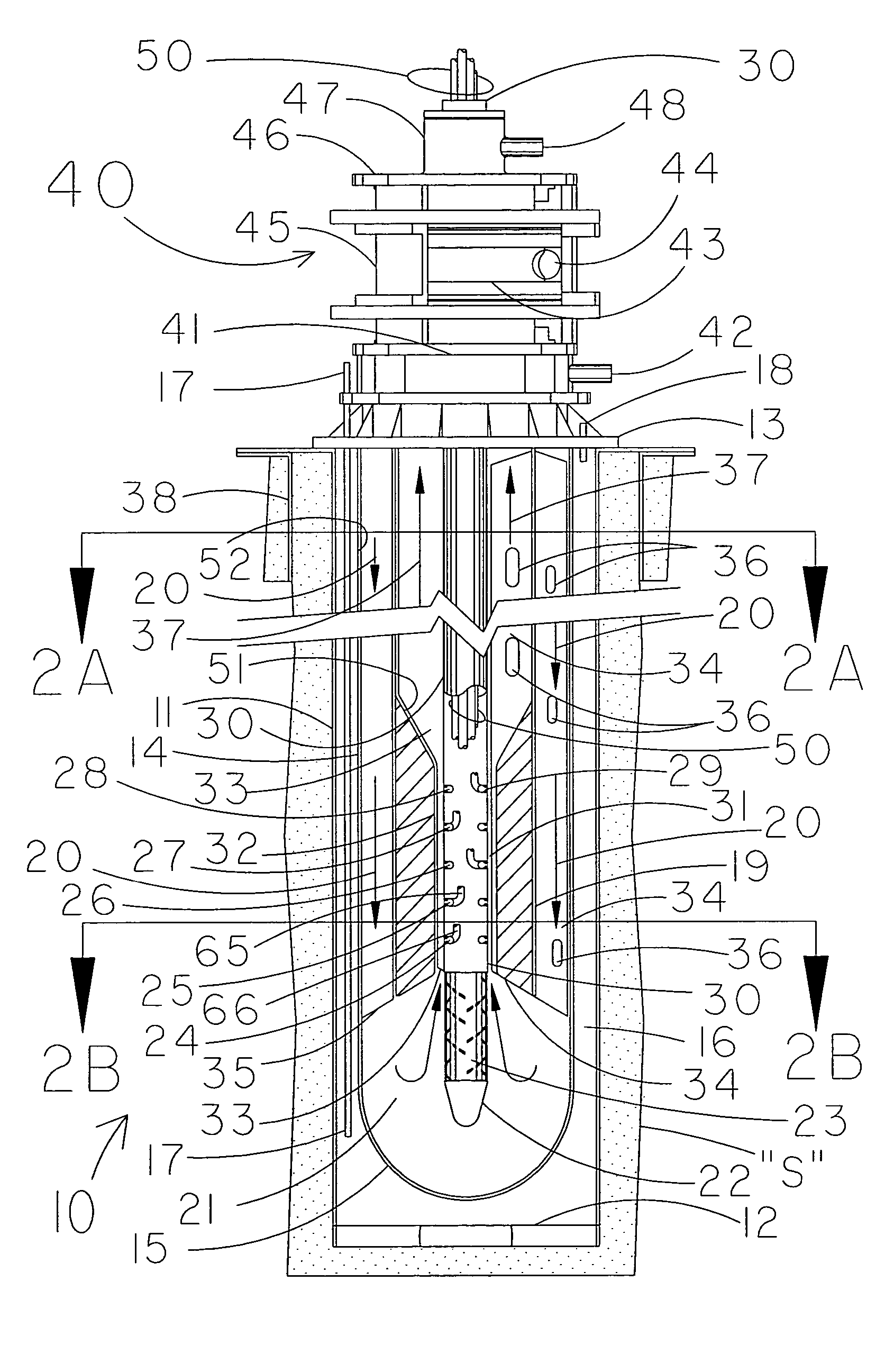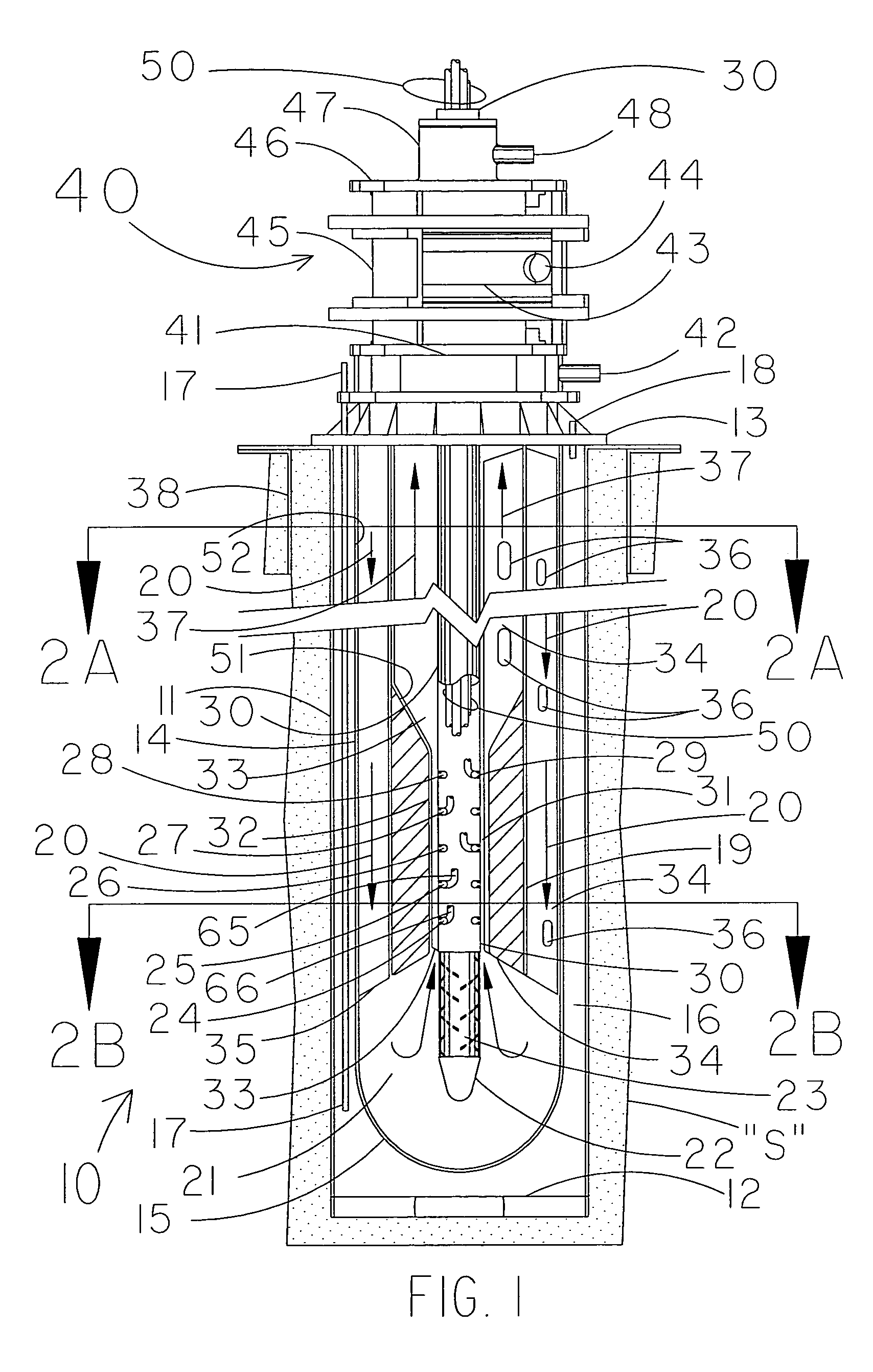Gravity pressure vessel and related apparatus and methods
a gravity pressure vessel and gravity technology, applied in the field of gravity pressure vessels, can solve the problems of reducing the usefulness of the process, generating external heat energy that may also be disadvantageous, and being much less cost effective, so as to avoid excess heat energy and enhance the effect of endothermic reactions
- Summary
- Abstract
- Description
- Claims
- Application Information
AI Technical Summary
Benefits of technology
Problems solved by technology
Method used
Image
Examples
Embodiment Construction
[0034]The present invention relates generally to various improvements in the art of gravity pressure vessels (GPVs). For example, at least one embodiment of the present invention provides for substantially sustaining the heat energy requirements of a GPV of the type suitable for hydrolyzing at least one non-dissolved organic material, by partial exothermic oxidation of dissolved organic contaminants in a fluid stream. By the phrase “sustaining the heat energy requirements,” it is meant that all of the heat energy lost due to the terminal temperature difference between the fluid stream introduced into the GPV and the fluid stream exiting the GPV, as well as any heat energy lost to the earth's strata, is at least partially replenished in the GPV by the partial oxidation of the dissolved organic contaminants in the fluid stream. In a preferred embodiment, all of the heat energy will be fully sustained and will be replenished with substantially no excess heat energy generated. That is, ...
PUM
| Property | Measurement | Unit |
|---|---|---|
| depth | aaaaa | aaaaa |
| depth | aaaaa | aaaaa |
| thick | aaaaa | aaaaa |
Abstract
Description
Claims
Application Information
 Login to View More
Login to View More - R&D
- Intellectual Property
- Life Sciences
- Materials
- Tech Scout
- Unparalleled Data Quality
- Higher Quality Content
- 60% Fewer Hallucinations
Browse by: Latest US Patents, China's latest patents, Technical Efficacy Thesaurus, Application Domain, Technology Topic, Popular Technical Reports.
© 2025 PatSnap. All rights reserved.Legal|Privacy policy|Modern Slavery Act Transparency Statement|Sitemap|About US| Contact US: help@patsnap.com



